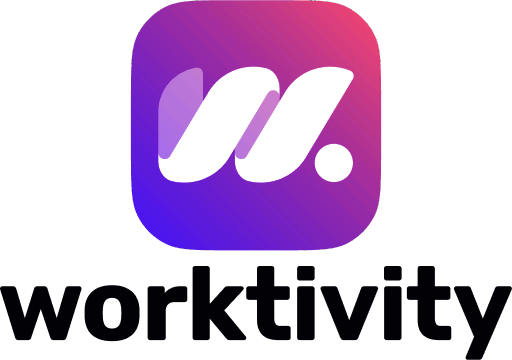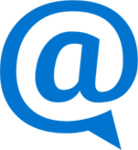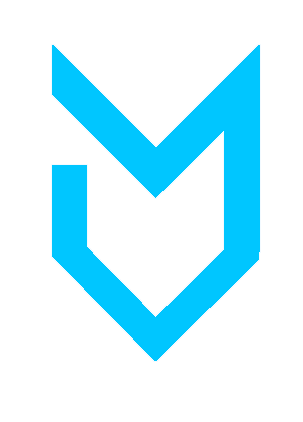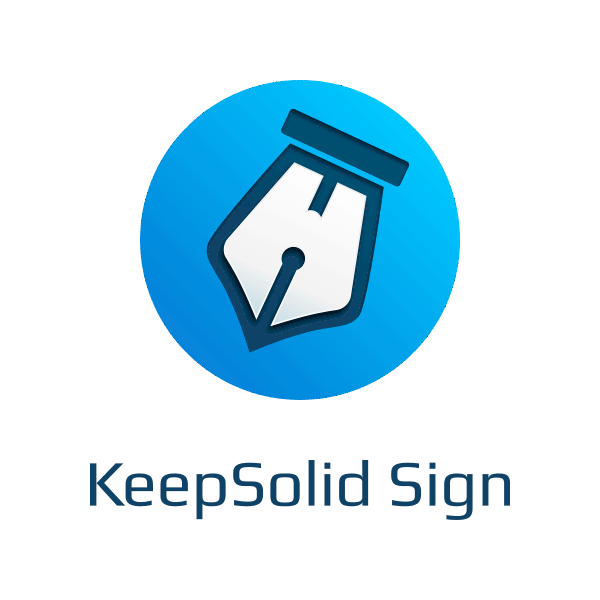Description

Evernote
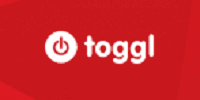
Toggl
Comprehensive Overview: Evernote vs Toggl
Evernote
a) Primary Functions and Target Markets
Primary Functions: Evernote is a note-taking and productivity application designed to help users organize and manage their information digitally. The core features include:
- Note-Taking: Users can create notes that include text, images, audio recordings, and web clippings.
- Notebook Organization: Notes can be organized into notebooks and tagged for easy retrieval.
- Search Functionality: Advanced search options allow users to find notes quickly using keywords, tags, or even by scanning handwritten notes.
- Synchronization: All content is synced across devices, enabling access anytime from a computer, smartphone, or tablet.
- Collaboration: Users can share notes and work collaboratively with others.
- Integration: Evernote integrates with other apps like Google Drive, Slack, and Outlook for enhanced functionality.
Target Markets: Evernote caters to a wide audience, including:
- Individuals: People who need assistance in organizing personal information and managing digital content.
- Professionals: Those who require a robust tool for managing work-related information, notes, and collaborative projects.
- Small Teams: Teams looking for a shared workspace to manage projects, brainstorm, and collaborate.
b) Market Share and User Base
Evernote has been a significant player in the note-taking application market. While it has faced increasing competition from both specialist apps and larger platforms that offer note-taking as part of a broader suite of tools, it boasts millions of users worldwide. However, exact current figures for user base and market share are typically not publicly disclosed.
c) Key Differentiating Factors
- Comprehensive Note Features: Evernote offers features like web clipping and document scanning, which distinguish it from simpler note-taking applications.
- Cross-Platform Availability: The app's ability to sync across numerous devices and operating systems is a significant advantage.
- Powerful Search and Organization: Evernote's strong search capabilities and organizational tools (notebooks, tags) are standout features for users with large amounts of information.
Toggl
a) Primary Functions and Target Markets
Primary Functions: Toggl is primarily a time-tracking application designed to help users track their work hours and enhance productivity. Its main features include:
- Time Tracking: Allows users to track time spent on various tasks and projects.
- Reporting: Offers detailed reports and insights into time usage to help users optimize their workflow.
- Project Management: Users can set and track goals, budgets, and timelines for different projects.
- Cross-Platform Use: Toggl can be accessed via web, desktop, and mobile applications.
- Integrations: It integrates with other productivity and project management tools, such as Asana, Trello, and Slack.
Target Markets: Toggl targets:
- Freelancers: Individuals who need to bill clients based on hours worked.
- Consultants: Professionals who track multiple client projects and require detailed reports for billing purposes.
- Teams and Businesses: Organizations looking for a way to manage employee hours and improve productivity.
b) Market Share and User Base
Toggl is a prominent player in the time-tracking market, known for its simplicity and user-friendly design. It serves millions of users globally, from freelancers to large teams. Like Evernote, specific market share statistics are generally not publicly available, but Toggl is well-regarded in its niche.
c) Key Differentiating Factors
- Ease of Use: Toggl is known for its intuitive interface and simplicity, making it easy to adopt for users new to time tracking.
- Focus on Time Management: Unlike broader project management tools, Toggl specializes in time management, making it more effective for detailed time tracking.
- Detailed Reporting: Offers robust reporting features that provide valuable insights into how time is spent, aiding in increasing productivity and managing projects efficiently.
Comparison and Conclusion
- Functionality: Evernote is a comprehensive note-taking and organization tool, whereas Toggl is focused on time tracking and management.
- Target Audiences: Evernote appeals to a broad audience needing organization and note management, including individuals and teams. Toggl targets professionals and businesses focusing on time tracking and productivity.
- Market Position: Both have distinct niches, and while Evernote faces competition from other note-taking tools integrated into broader productivity suites (like Microsoft OneNote or Google Keep), Toggl competes with other time-tracking and project management tools (such as Clockify or Harvest).
Ultimately, the choice between Evernote and Toggl depends on a user’s specific needs—whether they require a tool for organizing information and notes or for managing and tracking time effectively.
Contact Info

Year founded :
2008
Not Available
Not Available
United States
Not Available

Year founded :
2007
Not Available
Not Available
Estonia
Not Available
Feature Similarity Breakdown: Evernote, Toggl
Certainly! Let's break down the feature similarities and differences between Evernote and Toggl across the specified dimensions:
a) Core Features in Common
Note-Taking and Organization:
- Evernote: Primarily a note-taking app, it allows users to create and organize notes, notebooks, and tags.
- Toggl: While not a note-taking app, Toggl does allow users to document tasks and projects for time tracking purposes.
Both include the following common elements:
- Cross-Platform Support: Both Evernote and Toggl are available on multiple platforms, including web, desktop, and mobile apps (iOS and Android), emphasizing accessibility and synchronization across devices.
- Collaboration: Both support team collaboration features, allowing users to share information, track activities, and collaborate on shared tasks or projects.
b) User Interfaces Comparison
Design Aesthetic:
- Evernote: The interface is designed to emphasize note creation and organization, featuring a sidebar for easy navigation through notebooks, notes, and tags. It is visually oriented towards text editing and document management, with a focus on a clean and intuitive layout.
- Toggl: Prioritizes simplicity and speed for time tracking, with a dashboard for viewing tracked time and a straightforward interface for starting and stopping timers. The design is minimalistic, with a focus on presenting time data clearly and efficiently.
Ease of Navigation:
- Evernote offers comprehensive navigation options through its note organization features, with categorization capabilities that help manage large volumes of notes.
- Toggl uses a dashboard-centric approach, prioritizing quick access to timers and analytics, making it easy for users to log time and view reports.
c) Unique Features
Evernote:
- Advanced Note Features: Integrates features like web clipping, document scanning, and smart templates, which enhance its utility for extensive note-taking and information capture.
- Handwriting Recognition: Supports handwriting input and recognition, making it versatile for those who prefer to scribble notes by hand.
- Search within Documents: Offers powerful search capabilities, including searching through PDFs, images, and even handwritten notes, available in premium versions.
Toggl:
- Time Tracking: Its core feature is detailed time tracking, allowing users to log time on various tasks effortlessly.
- Reporting and Insights: Offers robust reporting features that break down time use and productivity insights, essential for freelancers and teams managing billable hours.
- Integration with Productivity Apps: Toggl seamlessly integrates with a wide variety of third-party productivity and project management tools like Asana, Trello, and Slack, enhancing workflow automation.
Summary
While both Evernote and Toggl share some common features in terms of cross-platform access and collaboration, they are uniquely designed for different core purposes. Evernote excels in note-taking and organization, offering unique document management features, while Toggl is specialized in time tracking with strong reporting and integrations. Your choice between them would typically depend on whether your primary need is for note organization or efficient time management.
Features

Not Available

Not Available
Best Fit Use Cases: Evernote, Toggl
Certainly! Both Evernote and Toggl offer specialized features that cater to various business needs and project types. Here's a breakdown of their best-fit use cases:
a) Evernote
Types of Businesses or Projects:
-
Knowledge Management and Research Projects:
- Evernote is an excellent choice for businesses focused on research, content creation, or any industry that requires comprehensive knowledge management. It allows for efficient note-taking, document storage, and idea organization.
-
Creative Industries:
- For writers, designers, and marketing teams, Evernote helps in collecting, organizing, and brainstorming ideas. Its features allow for clipping web articles, sharing sketch ideas, and storing multimedia content.
-
Project Management and Planning:
- While not a full project management tool, Evernote is useful for organizing project notes, deadlines, and to-do lists, especially for small to medium-sized projects needing more fluidity and creativity.
-
Education and Learning:
- Educational institutions and students can use Evernote for storing lecture notes, organizing research, and collaboration, thanks to its seamless note organization and search features.
Industry Verticals/Company Sizes:
- Small to medium-sized enterprises (SMEs), freelancers, and teams that require extensive documentation and information archiving.
- Sectors like education, creative industries, content marketing, and research-driven organizations find Evernote particularly useful.
b) Toggl
Scenarios When Toggl is Preferred:
-
Time Tracking for Freelancers and Consultants:
- Toggl is ideal for professionals who bill by the hour or need to track their time on various projects without much hassle.
-
Productivity and Efficiency Improvement:
- For teams and businesses aiming to improve productivity and workflow efficiency, Toggl provides detailed insights. It's suitable for analyzing how time is spent on tasks and optimizing processes.
-
Budget Management in Project-Based Work:
- Companies that manage multiple clients or projects simultaneously benefit from Toggl's ability to track billable time, helping in project budgeting and invoicing.
-
Remote and Distributed Teams:
- With its ability to integrate with various tools and provide detailed reports, Toggl is great for tracking the performance of team members across different time zones.
Industry Verticals/Company Sizes:
- Ideal for freelancers, agencies, project-based companies, and remote teams.
- Industries like IT and software development, consulting, marketing and advertising, and any field where time tracking and productivity measurement are crucial.
d) Catering to Different Industry Verticals and Company Sizes
-
Evernote:
- Industry Vertical: Useful in education, creative industries, legal services, and any sector needing robust documentation and note-taking.
- Company Size: Small businesses, individual users, and educational sectors are most suited for Evernote due to its cost-effectiveness and feature set that supports smaller teams.
-
Toggl:
- Industry Vertical: Popular in industries like software development, consulting, and design services where time management is crucial.
- Company Size: Suitable for freelancers, small to medium teams, and larger organizations that want to focus on productivity metrics, especially those with distributed or remote workforces.
Both tools cater to a variety of needs, from enhancing personal productivity to managing team-wide efforts, making them versatile solutions across different business domains.
Pricing

Pricing Not Available

Pricing Not Available
Metrics History
Metrics History
Comparing undefined across companies
Conclusion & Final Verdict: Evernote vs Toggl
Sure, let's break down the conclusion and final verdict for Evernote and Toggl:
a) Best Overall Value
Evernote and Toggl serve distinct purposes, catering to different needs, which makes a direct comparison challenging as they are not competitors in the same category. Evernote is a note-taking and organization tool, while Toggl is a time-tracking tool. The “best overall value” largely depends on what you need:
-
If note-taking, organizing documents, and project management are more crucial to you, Evernote offers better value. It provides a versatile platform for capturing information in various forms, organizing it neatly, and accessing it across multiple devices.
-
If time management, tracking billable hours, or improving productivity through detailed time analysis is your priority, Toggl is more valuable. It excels in tracking work hours, providing insights into productivity, and integrating with project management tools.
b) Pros and Cons
Evernote Pros:
- Versatile platform for note-taking, document storage, and task management.
- Offline access and robust synchronization across devices.
- Powerful search capabilities, including the ability to search handwriting.
Evernote Cons:
- Free version offers limited features; the full potential comes with a premium subscription.
- Some users report occasional sync issues or slow performance with large databases.
- Interface can feel cluttered or overwhelming for new users.
Toggl Pros:
- Simple, user-friendly interface that makes time tracking easy.
- Provides valuable insights and reports, helping optimize productivity.
- Integrates well with various project management and productivity tools.
Toggl Cons:
- Limited functionality outside of time tracking; additional apps may be needed for comprehensive project management.
- Can become costly for larger teams, as features expand in paid tiers.
- Setting up detailed tracking for multiple tasks may require some initial setup time.
c) Recommendations for Users
-
Determine Primary Needs: Clearly define what you need most: organization and note management (Evernote) or time tracking and productivity analysis (Toggl). This will guide your choice more than any feature comparison.
-
Explore Both Products: Both tools offer free trials or basic versions. Use these to explore the interface and features to see which aligns more naturally with your workflow.
-
Consider Integration: If you’re already using other productivity tools, consider how Evernote or Toggl would fit in with your current software ecosystem. Toggl integrates well with tools like Asana or Trello, while Evernote can be particularly useful if you need digital storage and accessibility.
-
Budget Consideration: If budget is a concern, weigh the cost of premium versions against your actual usage needs. Both platforms offer tiered pricing plans, so factor in the long-term cost implications of scaling your use.
In conclusion, the choice between Evernote and Toggl should be driven by your specific needs. For organization and rich note-taking, Evernote is ideal. For focused, effective time management, Toggl is preferable. Making a decision should be easy once your priority is clear.
Add to compare
Add similar companies
